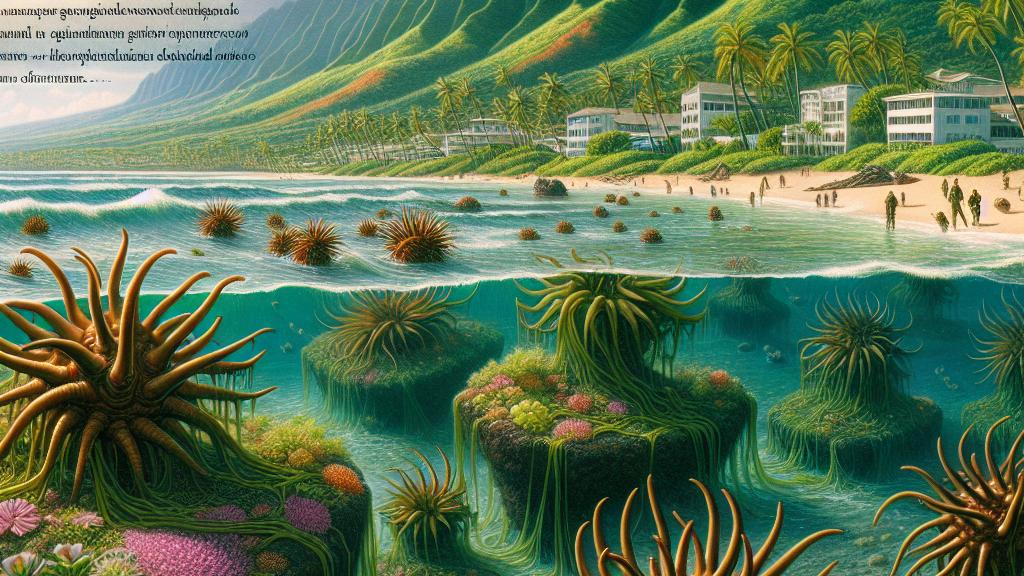Survival of Invasive Seaweed in Hawaiian Ecosystems
Overview
- Hawaii's coastal waters are increasingly dominated by invasive seaweed species, posing a threat to native ecosystems.
- Recent studies reveal that invasive species exhibit remarkable adaptability, often outperforming native ones.
- Understanding these dynamics is vital for the health of marine environments and local communities.

Hawaiian Coastal Challenge
In the dazzling waters of Hawaii, especially near the vibrant shores of Oʻahu and the lush landscapes of Maui and Hilo, invasive seaweed species like 'gorilla ogo' and 'spiny seaweed' are making their presence felt. These aggressive invaders not only threaten the rich biodiversity of Hawaiian ecosystems but also jeopardize the seafood supply critical to local communities. A groundbreaking study from the University of Hawaii at Mānoa uncovers how these invasive species have cultivated complex survival strategies, allowing them to thrive in the challenging conditions of submarine groundwater discharge regions. This adaptability highlights the pressing need to understand their ecological impact on the islands’ delicate marine environments.
Adaptation and Survival Strategies
What sets these invasive species apart is their astonishing ability to adapt to varying environmental conditions. For example, much like a grape swells in water, invasive seaweed cells adeptly adjust their internal chemistry to survive extreme salinity fluctuations. This rapid internal regulation is crucial; without it, they risk cell damage from excess water or dehydration. The researchers found that invasive seaweeds often have thinner cell walls and can maximize photosynthesis in nutrient-rich freshwater springs. In stark contrast, native species like limu maneʻoneʻo are noticeably absent from these advantageous areas, showing how vulnerable they are to competition from invaders—an alarming trend that must be addressed to protect these native ecosystems.
Implications for Ecosystem Management
As human influence continues to disrupt Hawaii's coastal ecosystems, it becomes increasingly clear that understanding the interactions between invasive and native species is essential for meaningful conservation efforts. The compelling findings from this research stress the urgency of investigating the tolerance levels of native limu and their importance to the marine food web. This knowledge can shape effective watershed management strategies, particularly in areas facing nutrient pollution issues. By prioritizing the conservation of Hawaii’s unique marine environments, we not only preserve invaluable biodiversity but also secure sustainable food sources for local communities, ensuring the islands’ stunning beauty and ecological health remain intact for future generations.

Loading...